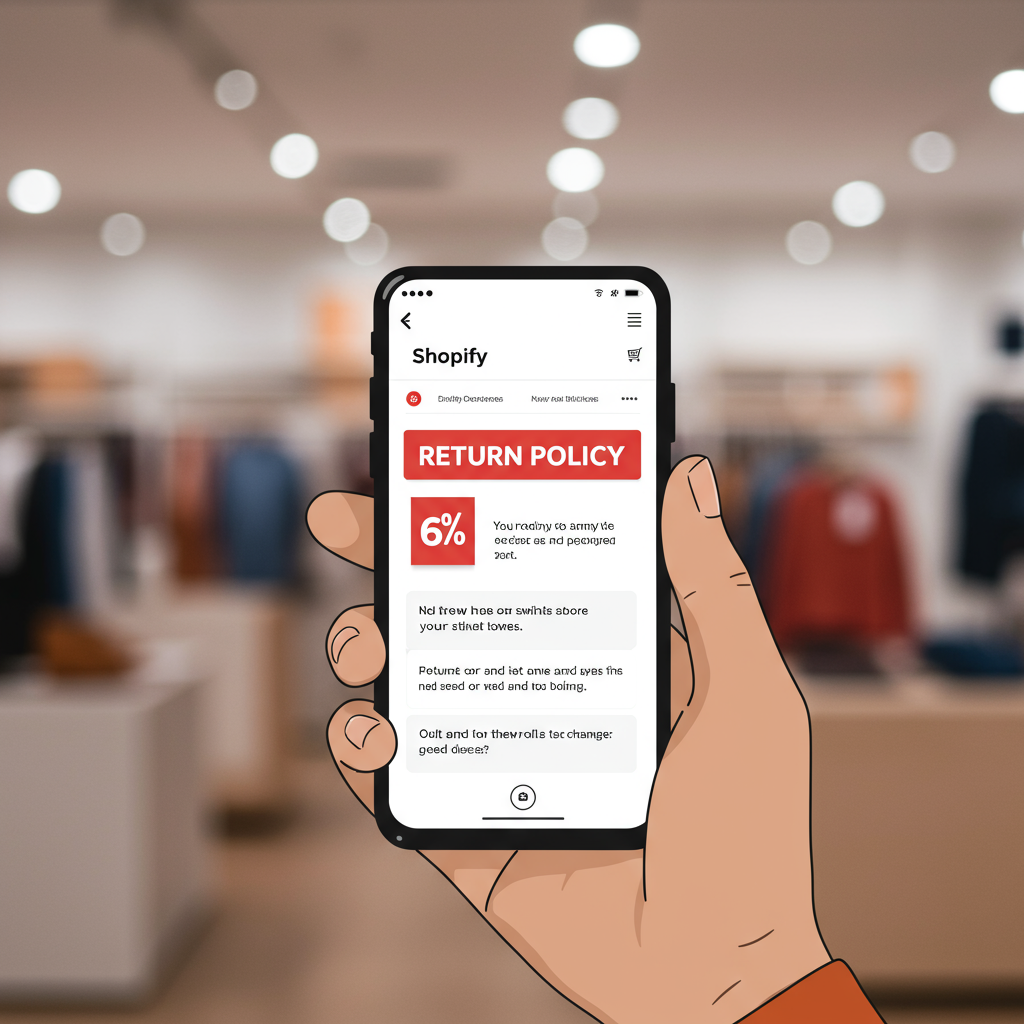Understanding and implementing effective return and refund policies is crucial for any Shopify merchant. Let me walk you through the essentials.
As a Shopify merchant, I know firsthand that managing returns and refunds can feel like a daunting task. It’s not just about processing a transaction; it’s about building trust, maintaining customer satisfaction, and protecting your business.
That’s why I’ve put together this comprehensive guide. My goal is to demystify Shopify’s role in returns, help you craft robust policies, and show you how to manage them effectively within your store.
First, let’s clarify a common misconception: Shopify itself does not set your return or refund policies. Shopify provides the platform and the tools, but the policies themselves are entirely up to you, the merchant.
This means you have the flexibility to design policies that align with your brand values, product types, and business model. However, with that flexibility comes the responsibility to create clear, fair, and legally compliant guidelines.
A well-defined return policy is more than just a legal necessity; it’s a powerful customer service tool. It instills confidence in your buyers, reduces buyer’s remorse, and can even differentiate you from competitors.
So, what are the key elements I believe every effective return and refund policy should include? Let’s break them down one by one.
**1. Return Window:** This is perhaps the most critical element. How many days do customers have to return an item from the date of purchase or delivery? Common windows are 14, 30, or 60 days. Be explicit.
**2. Condition of Items:** Clearly state the required condition for returns. Do items need to be unworn, unwashed, with original tags attached, and in their original packaging? Spell it out to avoid disputes.
**3. Eligible vs. Non-Eligible Items:** Not everything can be returned. I always advise merchants to list specific items that are final sale, such as personalized goods, digital products, intimate apparel, or perishable items.
**4. Return Process:** Guide your customers step-by-step. How do they initiate a return? Do they need to contact customer service first? Is there an online portal? Provide clear instructions on packaging and shipping.
**5. Refund Method:** How will the customer receive their money back? Is it to the original payment method, store credit, or an exchange? Be transparent about the timeline for processing refunds.
**6. Shipping Costs:** Who pays for return shipping? Is it the customer, or do you provide free return labels? This is a significant factor for customers and can impact their decision to purchase.
**7. Restocking Fees:** If you charge a restocking fee, you must clearly state the percentage or flat fee. While sometimes necessary, I’ve found these can be a point of contention for customers.
**8. Exchanges:** Explain your policy on exchanges. Can customers swap for a different size, color, or even a different product? Outline the process for facilitating these.
**9. Damaged or Defective Items:** Have a separate, clear process for handling items that arrive damaged or are defective. This often requires different handling than a standard return.
**10. International Returns:** If you ship globally, consider the complexities of international returns, including customs duties, taxes, and shipping costs. These often require a separate clause.
Now that we’ve covered the essential elements, let’s talk about crafting your policy. My advice is always to prioritize clarity and transparency. Use simple, straightforward language, avoiding legal jargon.
Shopify offers a basic policy generator under ‘Settings > Legal’ in your admin. While it’s a good starting point, I highly recommend customizing it to fit your unique business needs and local regulations.
Remember, your policy should be easily accessible. I always recommend linking it prominently in your store’s footer, on product pages, and during the checkout process. Don’t make customers hunt for it.
Once your policy is drafted, implementing it on Shopify is straightforward. Go to ‘Settings’ > ‘Legal’ in your Shopify admin. Here, you can paste your policies for Refund, Privacy, Terms of Service, and Shipping.
These policies will then automatically appear as links in your checkout process, which is a great convenience. You can also create dedicated pages for each policy and link them in your store’s navigation.
Managing returns in the Shopify admin is also quite intuitive. When a customer requests a return, you can process refunds directly from the order page. You can issue full or partial refunds, and even restock items.
For more advanced return management, such as generating return labels or automating parts of the process, I often recommend exploring apps from the Shopify App Store. There are many excellent solutions available.
Beyond the technical aspects, I believe the human element is paramount. Train your customer service team thoroughly on your policies. Consistency in application builds trust and reduces frustration.
Clear communication throughout the return process – from acknowledgment to refund confirmation – is key. Proactive updates can turn a potentially negative experience into a positive one.
A well-crafted and consistently applied return policy can significantly reduce chargebacks, boost customer loyalty, and enhance your brand’s reputation. It shows you stand behind your products.
Conversely, vague policies, hidden clauses, or inconsistent application can lead to customer dissatisfaction, negative reviews, and even legal issues. Avoid these pitfalls at all costs.
Finally, I urge you to regularly review and update your policies. As your business evolves, so too should your guidelines. Stay informed about consumer protection laws in your operating regions.
By investing time in creating and maintaining clear, fair, and accessible return and refund policies, you’re not just protecting your business; you’re actively building a stronger, more trustworthy brand.
What do you think about this article? I’d love to hear your thoughts on how you manage returns in your Shopify store.
I hope this detailed guide empowers you to confidently manage returns and refunds, turning potential headaches into opportunities for customer satisfaction and loyalty. Happy selling!






